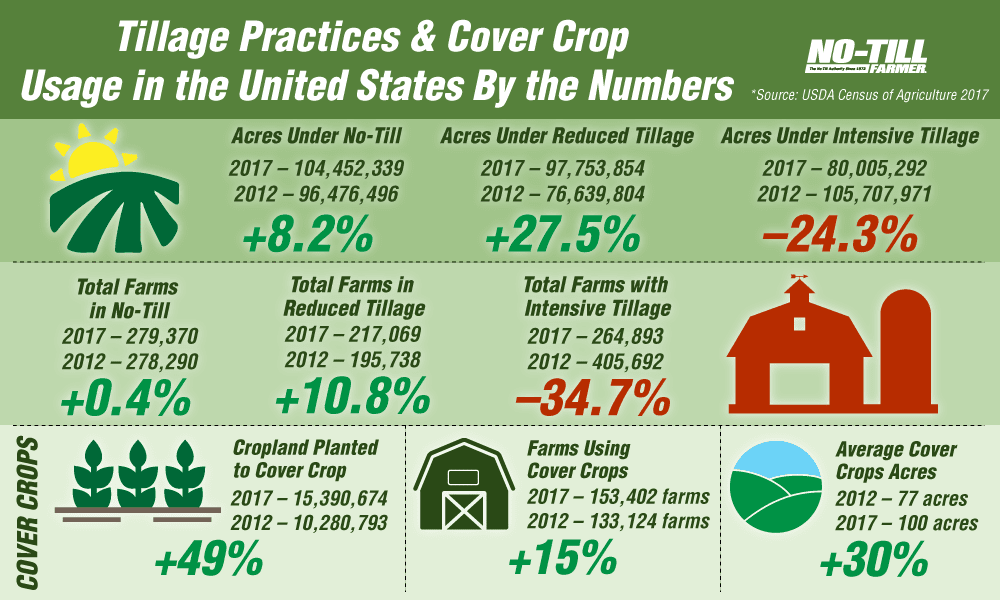While many no-tillers have understood the soil-damaging effects of tillage for decades, the benefits of no-till techniques and cover crop usage are still being discovered across the globe. With a renewed public focus on soil health and sustainability, word is spreading that these regenerative techniques are not only good for the land but also good for the bottom line.
Here in the U.S., the USDA recently released 2017 Census of Ag data that shows a big reduction in tillage across the country along with large increase in the adoption of cover crops. It's exciting news to be sure but a closer look shows there's still lots of room for improvement. Total acreage seeded to cover crops, after all, represents only about 5% of the total cropland in the nation. But cover crop acreage increased almost 50% since 2012 so we're on the right track. Rob Myers, regional director of extension programs for Sustainable Agriculture Research and Education (SARE) recently chatted with senior editor John Dobberstein about cover crop practices and shared his ideas about the future growth of cover crop adoption. It'll be interesting to see how his predictions pan out.

Data from the 2017 Census of Ag shows that regenerative practices including no-till, reduced tillage, and seeding cover crops are gaining traction.







Post a comment
Report Abusive Comment